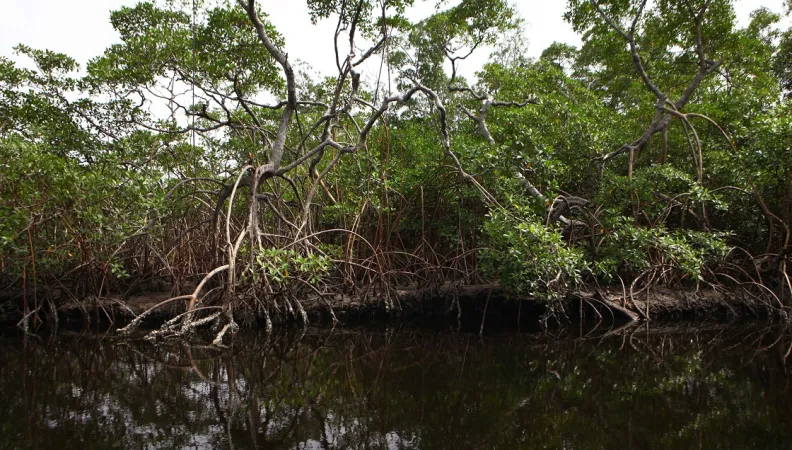Share the page
AFD Launches New Program to Protect Marine Ecosystems
Published on

AFD recently launched the “Blue Carbon Facility”, a new financial tool to ensure the long-term preservation of marine ecosystems based on improving knowledge, integrating this issue into public policy and trialing new financing mechanisms.
At a time when the planet is up against unprecedented environmental challenges, marine ecosystems, and coastal ecosystems in particular, such as mangroves, seagrass beds and coastal marshes–are proving key allies in the fight against climate change because of their remarkable capacity for carbon sequestration. Referred to as “blue carbon”, these ecosystems can absorb up to four times more carbon per unit area than terrestrial forests.
Powerhouses of carbon sequestration and climate adaptation
Blue carbon ecosystems offer more than simple carbon sequestration. They also play a crucial role in climate change adaptation. They protect the shoreline from erosion and storms, forming a natural barrier that increases the resilience of coastal areas.
What’s more, these biodiversity reservoirs are home to a vast array of marine species, and provide vital food sources for coastal communities.
See also: With a Fifth of the World’s Mangroves, Indonesia is Boosting its Blue Carbon Strategy
Despite their importance, coastal ecosystems are severely endangered and rapidly deteriorating due to urbanization, pollution, aquaculture and the effects of climate change. The current situation is alarming to say the least: over the last 50 years, between 20% and 50% of these ecosystems have been lost, and this trend is continuing.
Why opt for a Blue Carbon Facility?
The conditions required to protect blue carbon ecosystems are not being met in a number of countries. There is often a lack of knowledge about these ecosystems, and a failure to develop appropriate strategies or regulations to protect them. In addition, there remains a significant need for financing. As a result, the potential of these ecosystems to sequester carbon remains largely untapped.
In this regard, AFD’s Blue Carbon Facility aims to establish the conditions needed to ensure the conservation of these ecosystems over the long term.
The facility focuses on three key areas, beginning with the deepening of our knowledge of coastal ecosystems. “This will require conducting surveys, mapping and analyzing the dynamics responsible for their degradation, in order to better understand how they function and the threats they are facing,” says Emmanuel Baudran, AFD’s Deputy Executive Director of Sustainable Development Solutions.
“The second priority is to integrate these blue carbon ecosystems into national and international strategies for protecting biodiversity and combating climate change. And the third priority is to trial new financing mechanisms, such as carbon credits, to encourage the conservation and restoration of these precious environments.”
See also: “Development Banks Work together to make the Oceans a Priority”
What is AFD’s role?
AFD will be responsible for implementing these actions, either by directly managing projects, or by delegating this work to NGOs or research institutes.
Around fifteen beneficiary countries have already been identified according to their needs, including Costa Rica, where we plan to expand on the collaborative work started by the French Global Environment Facility (FFEM), as part of the Mangrove Initiative.
“We need to provide a targeted response to our partners’ capacity-building needs, in this crucial field for climate trajectories and biodiversity conservation. This facility will serve as both a catalyst and accelerator,” says Emmanuel Baudran.
This project is aligned with the targets set by the Global Framework for Biodiversity and the blue carbon strategy initiated by AFD at the One Ocean Summit in Brest in 2022. It is designed to be a flagship project in the run-up to the United Nations Ocean Conference (UNOC) in Nice in June 2025 (UNOC-3). The facility will also be used to continue trialling new financing mechanisms, particularly carbon credits.
